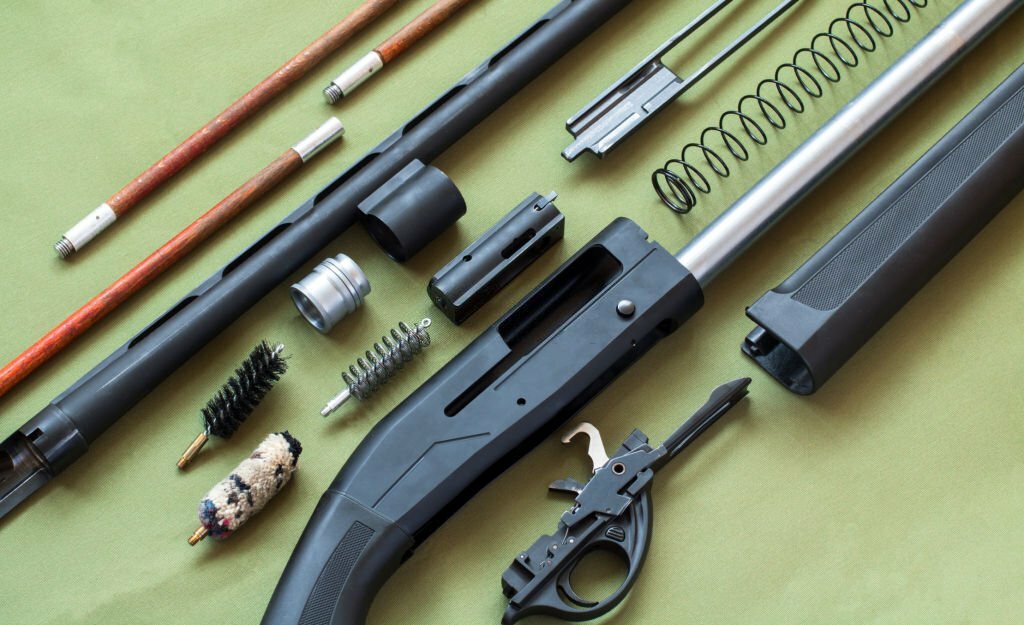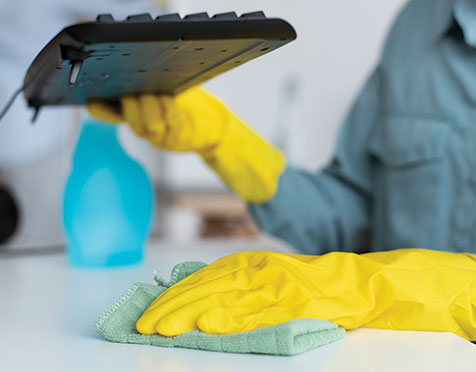Firearms can be powerful tools for personal protection, sporting activities, and livelihood for some individuals. Owning one represents a substantial investment that requires regular upkeep to ensure reliable performance and safekeeping.
Though firearm maintenance information can be found across a broad spectrum, this article gives practical and expert-backed tips to keep your firearm in top shape and extend its lifespan while guaranteeing accurate operation. By adhering to these recommendations, you can extend its lifespan and ensure it operates safely and precisely.
Regular Cleaning
Cleaning your firearm regularly is one of the most essential aspects of its care and maintenance. Guns become exposed to various contaminants during use, such as powder residue, dirt, and moisture that clings onto them – failure to do so correctly may lead to corrosion, malfunction, or reduced accuracy in your gun.
Before beginning to clean your firearm:
- Unload It: Always ensure your firearm is unloaded before cleaning, taking special care not to leave any ammunition in its chamber or magazine.
- Use the Right Tools: Invest in high-quality cleaning kits tailored explicitly to your firearm, typically including rods, brushes, patches, and solvent.
- Follow manufacturer’s instructions: Each firearm requires specific cleaning instructions, so always refer to its manual for more detailed advice.
- Be Thorough: Pay careful attention to all parts of your firearm, including its bore, chamber, slide, and frame. Remove fouling and residue with a damp cloth while ensuring all cleaning agents have been entirely removed after each use.
Lubrication
Proper lubrication is critical for the smooth operation of any firearm. Lubricating moving parts helps reduce friction, extending their lifespan, while over-lubrication may attract dirt and debris; finding an optimal balance is essential.
Here’s how to lubricate your firearm:
- Use only high-quality gun lubricant: Don’t rely on household oils and greases as these may not be appropriate for firearms; choose gun-specific lubricant for maximum performance.
- Use lubricant sparingly: Only apply oil to essential moving parts such as slide rails, trigger mechanisms, and bolt carriers that need it; excessive lubrication could cause malfunctions.
- Remove Excess Lubricant: Use a clean cloth to wipe away any excess once applied. A thin but even coating should suffice.
Rust and Corrosion
Rust and corrosion can wreak havoc on any firearm, negatively affecting functionality and appearance. Regularly check for signs of rust and corrosion on your gun if stored in an environment with high humidity, especially indoors.
To prevent rust and corrosion:
Proper storage: Buy a high-quality gun safe or cabinet equipped with dehumidification to store your firearm in an environment free of moisture exposure.
Use Rust Prevention Products: When it comes to firearm storage, using products like silicone-impregnated gun socks or rust-inhibiting coatings could provide the most significant level of protection from corrosion.
After handling or using your firearm, use a silicone-impregnated cloth to wipe it clean with silicone to eliminate moisture build-up and fingerprints.
Regularly Replace Springs
Springs are essential in the operation of any firearm, yet over time, their springs can weaken and wear out, potentially leading to malfunctions and misfires. To maintain the reliability of your gun, worn-out springs must be regularly replaced.
Here’s a guideline for spring replacement:
Consult Your Firearm’s Manual: Each firearm may require periodic spring replacement; consult its manual for guidance as to when this should occur.
Keep spare springs on hand: To prevent unexpected replacement needs, always have extra recoil springs and magazine springs on hand for quick replacement. If you are in doubt about replacing springs, consult a qualified gunsmith or firearm technician.
Storage Ammunition Properly: Your ammunition’s state can significantly influence its performance in your firearm, so proper storage is critical in maintaining its reliability and effectiveness.
Follow these guidelines when storing ammunition:
Keep ammunition dry: Moisture can cause ammunition to become unreliable over time, so ensure you store ammunition in an airtight container or ammo can for best results.
Rotate Your Ammunition: If you have a large stockpile, use your older rounds first (FIFO). This helps ensure that it remains in excellent condition.
Inspect for Damages: Before using any ammunition, inspect it for signs of wear, corrosion, or deformities that might compromise its integrity. Damaged ammunition should be safely discarded.
As much as regular cleaning and essential maintenance can go toward protecting your firearm, professional help should also be sought when necessary. A qualified gunsmith or firearm technician can perform inspections and repairs that you may be unable to do yourself.
Consider professional gunsmith maintenance when your firearm experiences repeated malfunctions or misfires; they can diagnose and address the problem effectively for accuracy issues.
Modifications: If you plan to modify or upgrade the components of your firearm, seek professional guidance to ensure all changes are executed safely and appropriately.
Check and Tighten Fasteners: Firearms feature numerous screws, pins, and fasteners connecting different components. Over time, these fasteners may become loose due to recoil and vibration from firing, leading to accuracy issues or potential safety risks. To maintain the safe performance of firearms, these fasteners must remain tight.
Maintain the integrity of your firearm:
Inspect for loose fasteners: All screws and pins on the firearm must be regularly checked for signs of loosening, with particular attention paid to scope mounts, stock screws, and front sight bases.
Employ the Proper Tools: For optimal results when tightening fasteners, invest in quality gunsmithing screwdrivers and wrenches to prevent accidental fastener damage when tightening them down.
Use thread locker: Regarding fasteners that tend to come loose over time, consider using removable thread lockers to protect against vibrations that could loosen them. Doing this will reduce vibration-related loosening over time and preserve critical pieces.
Undergoing Storage Issues: Even with proper firearm storage practices, firearms may develop surface rust over time due to exposure to moisture or humidity. Left unchecked, surface rust can quickly lead to pitting and further deterioration – so be proactive in treating it quickly
Early Detection: Perform regular inspections to check for signs of surface rust on your firearm, making its removal much simpler.
Safely Remove Rust: For safe removal of rust on firearms, use either a soft cloth or a product designed specifically to remove it. Rub gently across the affected area while taking precautions not to harm its finish.
Apply a protective coating: After removing rust, consider applying a thin coat of gun oil or antirust product to the exposed metal surfaces to safeguard them from further rust formation.
Consider Ammunition Compatibility
Selecting ammunition compatible with your firearm is crucial for its safety and performance, so you must understand its caliber, cartridge type, and load with your specific gun. Firing incorrect ammunition may result in catastrophic failure and irreparable damage – so be careful!
To ensure ammunition compatibility:
- First, examine barrel markings: Your firearm’s barrel should bear markings showing its caliber and cartridge specifications – always use ammunition that matches these marks.
- Review owner’s manual: Your manufacturer’s manual provides precise details regarding which ammunition should be used with your firearm. Be sure to heed their advice.
- Be wary of reloads: Although many shooters prefer reloading their ammunition, strict guidelines for safe reloading must be observed to ensure its proper usage and shooter safety.
Be wary when purchasing ammunition from unreliable sources.
Maintain Your Finish
Your firearm’s finish adds aesthetic value and shields it against corrosion. Regular maintenance will keep it looking its best while mitigating wear-and-tear effects.
After each shooting session, use a soft cloth to clean your firearm of residue, dirt, or fingerprints left by shooting. Additionally, periodically use a silicone-impregnated material to maintain its finish’s luster and protective qualities.
Be Aware of Holster Wear: When carrying your firearm in a holster, watch for wear to its finish over time. Conduct regular inspections and clean areas where it contacts the gun to detect wear as soon as it appears.
Learning How to Disassemble and Reassemble
Not all firearms require regular disassembly; however, knowing how to take yours apart and put it back together again is an invaluable skill that enables deeper cleaning of the weapon and any possible issues arising from dismantlement.
Disassembly and Reassembly Instructions
The manual usually contains detailed instructions on how to disassemble and reassemble your firearm, so follow those carefully for instructions before starting!
Conclusion
Owning a firearm is an immense responsibility, so keeping it in peak condition requires proper maintenance. By adhering to these firearm maintenance tips, you can ensure your investment remains reliable, safe, and accurate for years. Safety should always remain your number one concern when handling firearms; always follow all local guidelines and regulations regarding gun usage when using firearms responsibly.





